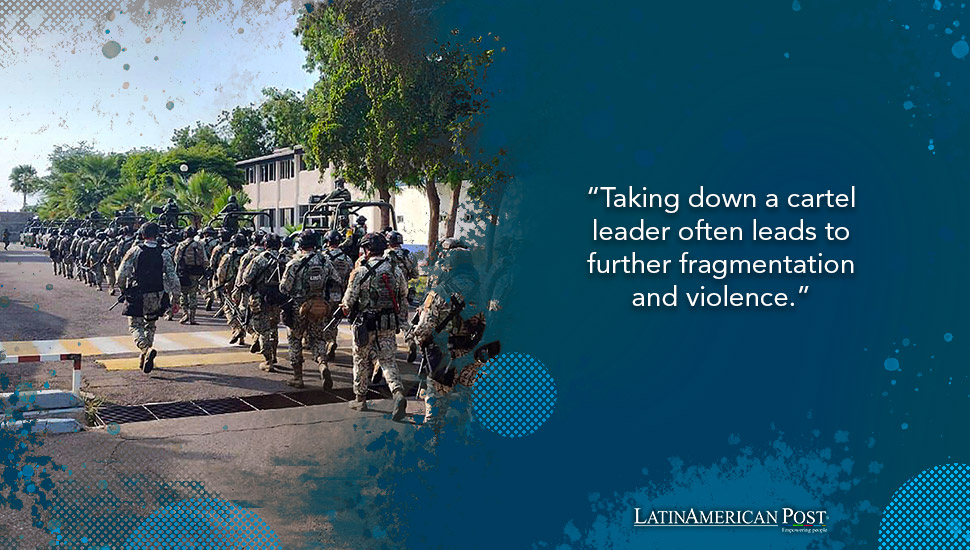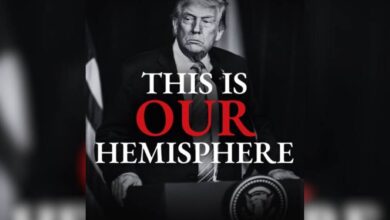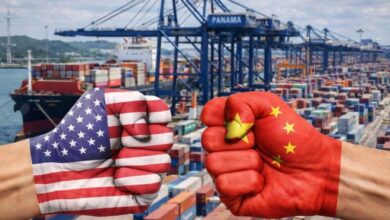Capturing Latin American Drug Lords Does Not End Cartel Power

The arrest of Ismael’ El Mayo’ Zambada is a notable victory in the fight against the Sinaloa Cartel. However, history shows that taking down a cartel leader is not the end of the problem. Instead, it often leads to further fragmentation and violence.
The recent capture of Ismael’ El Mayo’ Zambada in Texas marks another high-profile arrest in the United States’ ongoing battle against the Sinaloa Cartel. Zambada, the co-founder of the cartel, had eluded authorities for decades despite a $15 million bounty on his head. His arrest, alongside Joaquín Guzmán López, son of Joaquín “El Chapo” Guzmán, has been hailed as a significant victory by the U.S. Department of Justice.
While the detention of these notorious figures is indeed a notable achievement, it is crucial to recognize that the arrest of a cartel leader does not equate to the dissolution of the criminal organization they once headed. The history of drug cartels, particularly in Latin America, demonstrates that removing a leader often leads to internal power struggles and can even result in the cartel becoming more violent and fragmented.
Cartels’ Resilience to Leadership Removal
The Sinaloa Cartel’s resilience is emblematic of the broader phenomenon called the “Hydra effect”—when one head is cut off, several others grow in its place. This has been observed repeatedly with the Sinaloa Cartel. The capture of Joaquín “El Chapo” Guzmán in 2016 did not dismantle the organization. Instead, it led to a power vacuum and fierce competition among factions vying for control.
El Chapo’s arrest was followed by violent infighting within the cartel. Various leaders, including his sons and other prominent figures, sought to assert dominance. This struggle increased violence, not just within the cartel but also affecting civilian populations in regions where the cartel operates. In Sinaloa, for instance, the murder rate surged as rival factions clashed.
The recent arrest of Zambada may trigger a similar response. While he was a crucial figure in the cartel, his capture does not signify the organization’s end. The Sinaloa Cartel’s extensive networks and deep-rooted connections in Mexico and the United States mean it is likely to continue operating, albeit under new leadership. Such cartels’ operational capacity and financial power are not solely dependent on their leaders but are embedded in their sophisticated structures and alliances.
Lessons from the Fall of Other Cartels
The case of the Guadalajara Cartel in the 1980s provides a historical precedent. The capture of its leader, Miguel Ángel Félix Gallardo, known as “El Padrino,” led to the cartel’s fragmentation into smaller, more violent groups, including the Sinaloa Cartel itself. Gallardo’s downfall was initially seen as a triumph for law enforcement, but it inadvertently caused the proliferation of several powerful cartels that filled the void.
Similarly, the demise of the Cali Cartel in Colombia after the arrest of its leaders, the Rodríguez Orejuela brothers, did not end cocaine trafficking. Instead, it paved the way for the rise of the Norte del Valle Cartel and other smaller groups that continued the lucrative trade. This decentralization of power often makes enforcement more challenging as it creates multiple targets instead of a singular, centralized organization.
In Latin America, cartels often embed themselves within the socio-economic fabric of the regions they control. They provide employment, albeit illegal, and exert influence over local politics and law enforcement. This entrenchment means that even with the arrest of high-ranking members, the underlying issues that allow these cartels to thrive remain unaddressed. Poverty, corruption, and lack of education create an environment where cartels can regenerate and continue their operations.
The Fentanyl Crisis and the Future of the Sinaloa Cartel
The Sinaloa Cartel’s involvement in the fentanyl crisis exemplifies the ongoing threat these organizations pose. Fentanyl, a potent synthetic opioid, has caused a dramatic rise in overdose deaths across the United States. The cartel’s sophisticated distribution networks ensure that this deadly drug continues to flow across borders, contributing to the public health crisis.
Despite the arrest of leaders like Zambada, the production and distribution of fentanyl are likely to persist. The cartel’s decentralized nature allows it to adapt quickly, with new leaders emerging to continue operations. The high demand for narcotics in the United States provides a constant incentive for the cartel to maintain its activities.
Addressing this issue requires a multifaceted approach. Law enforcement efforts must be complemented by strategies that target the socio-economic conditions fostering cartel growth. Strengthening institutions in Latin America to combat corruption and provide economic opportunities can reduce the pool of recruits for these criminal organizations. In the United States, tackling the opioid crisis involves not just law enforcement but also public health initiatives aimed at reducing demand through education, treatment, and prevention programs.
The Need for a Comprehensive Strategy
The arrest of Ismael’ El Mayo’ Zambada is a significant step, but it is not a solution. The persistence of drug cartels like Sinaloa highlights the need for a more comprehensive strategy that goes beyond targeting individual leaders. As history has shown, cartels are adaptable and resilient, capable of regenerating and continuing their operations despite leadership decapitation.
To truly dismantle these influential organizations, efforts must weaken their structural foundations and address the broader socio-economic issues that sustain them. This includes enhancing cross-border cooperation, improving law enforcement capabilities, and investing in community development to provide viable alternatives to the illicit economy.
Also read: Cartel Monster Trucks and Mexico’s Battle Against Armored Warfare
Ultimately, the battle against drug cartels is not just about capturing their leaders; it is about creating a world where these organizations no longer have the power to terrorize communities and profit from human suffering. The recent arrests are a reminder of the ongoing struggle and the need for a sustained, multi-dimensional approach to bring lasting change.




